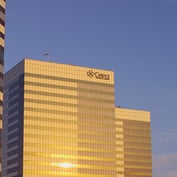Independent advisory firms are beginning to look more like broker-dealers every day. That’s not a combination of words many advisors expect to read. But the plain fact is that independent advisory firms are becoming structurally more complex and disparate. The newest evidence of this trend is the growing movement toward multiple office locations.
In a recent white paper written by FA Insight for Pershing Advisor Solutions, we found that 50% of the country’s top 50 wealth management firms now maintain offices in multiple locations (for a copy of Creating Growth: The Rewards and Challenges of the Multi-Location Model, e-mail me at [email protected]). Another study on operating performance conducted three years ago revealed that 25% of all independent firms with assets over $100 million had at least a second location.
The good news is that advisory practices are beginning to look more like businesses. Not only are they driving growth from strategic plans, but they are developing processes around human capital, operating efficiency and client service. The bad news: not all of these processes are well developed, and opening additional offices exacerbates the problems.
Several symptoms of strain become more obvious when a firm adds a new location:
- Inconsistent work
- Cultural dysfunction
- High staff turnover
- Lower profit margins
According to the FA Insight study, the first challenges that multi-office firms experience stem from unclear protocols for how things should be done and inadequate quality control. These challenges affect every area, from how new clients are prospected and on-boarded to how recommendations are delivered and, in some cases, even to how reports are presented to them.
Cultural dysfunction occurs when a new location lacks the presence of a cultural carrier from the home office. New offices are often created because of an acquisition or lift-out from another firm. The leaders on both sides initially believe that because the deal looks good on paper it will work out culturally. In reality, the new people already have their own ways of thinking, speaking and behaving which are likely quite different from how the people in the main office operate. Tension builds. Communication breaks down. The new folks chafe at the requests and demands of the firm leaders and the relationship becomes hostile.
As a result, employees and even partners in the branch office often become alienated and eventually leave. The branch office tends to be much smaller than the headquarters so every departure is magnified. The office gets further stigmatized, making it even harder to achieve critical mass.
Higher Dysfunction = Lower Profitability
All of this dysfunction contributes to lower profitability for the branch and, consequently, for the firm. Start-up costs are high for a new branch even when new advisors bring in clients, assets and revenue. Investments must be made in office space, leasehold improvements, equipment and furniture, support staff and marketing in order to create a brand presence. The new office almost always takes longer to get to productivity than the parties to the plan originally anticipated.








 February 01, 2011 at 07:00 PM
February 01, 2011 at 07:00 PM










